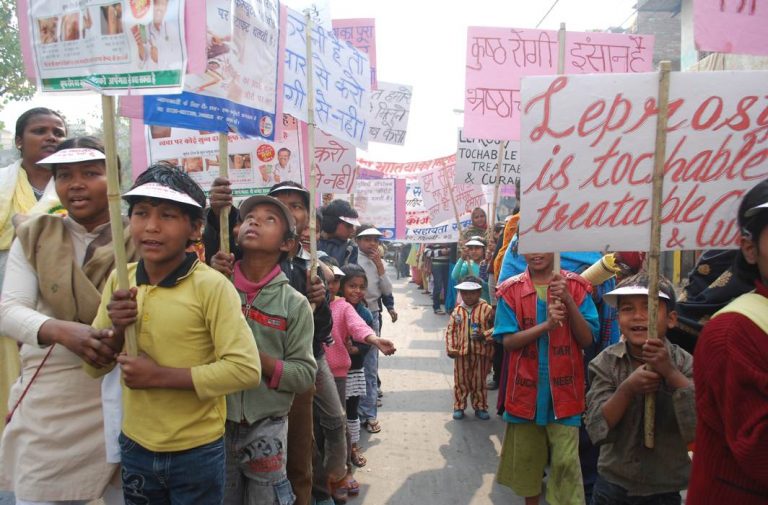
The fact that both the Center and the Delhi government could not give the High Court any plans for rehabilitation of displaced leprosy patients on the streets shows their couldn’t care-less attitude .
By Ramesh Menon
When begging was decriminalised by the Delhi High Court in August 2018, little did Rajeev Kumar, a leprosy patient living in a government-run home for leprosy and TB patients realise that soon he would be out on the streets. Almost all the 450 leprosy patients that stayed there had been caught begging and then ordered by the court to be kept at the home as begging was a crime. But since it was decriminalised, they were all released and asked to fend for themselves.
Leprosy patients are heavily stigmatised and there is no place for them to go. Their families do not want them. Nor do shelter homes. So, they resort to begging to eke out a livelihood on the streets.
Kumar who was one of those who was released from the Home for Leprosy and TB (HLTD) affected patients at Tahirpur in Shahdara, moved the Delhi High Court praying that he and others released from the government shelter be readmitted as they were languishing on the streets of the capital suffering from the ravages of severe winter.
Ironically, the HLTD is widely known as a jail for leprosy beggars.
The petition highlighted the stigma that leprosy patients faced in society and how they could never get admission to any shelter because of the disease. The petition prayed for an order directed that steps be taken to ensure rehabilitation and resettlement of leprosy patients who were today “displaced and virtually on the roads”.
Under the Delhi Prevention of Begging Rules, 1960, The Delhi government had set up 11 institutions to take care of the beggars who were rounded up and then sent to the shelter homes by the court. But after decriminalisation, they were all released. Most of them had no place to go. Dr. Mary Verghese, Executive Director, The Leprosy Mission Trust India, told India Legal: “People affected by leprosy belong to the most marginalised and vulnerable sections of society. They resort to begging as they do not have any other means of livelihood. In the present case, a person affected by leprosy was left on the street to fend for himself after begging was decriminalised. The government should provide houses and means of livelihood to people affected by leprosy to avoid such a situation arising again in the future.”
Ironically, the problems of leprosy patients who are forced to beg for a living as they are shunned by their families and employers began after begging was decriminalised. Earlier, shelter homes like the HLTB was a blessing for them as it was one place where they could be treated, provided food and shelter. Nowhere else do they have such facilities.
Ashim Chowla, executive, Lepra Society, Secundrabad, told India Legal: “When begging was decriminalised, the state should have taken a different view as far as leprosy affected persons are concerned as they face a lot of stigmas. There have to be separate provisions for them as the stigma continues even after they have been completely cured. We have to deal with this social reality. As an organisation that works to eradicate leprosy, we would want our patients to live normal fulfilling lives and want them to be integrated into society and not continue to live in isolated ghettos. But we have to be sensitive to treat them differently from other patients and look at every case differently.”
Kumar’s counsel, Manisha Bhandari, pleaded with the court that it directs the government to convert the shelter homes that were set up under the Beggary Act into treatment and rehabilitation centers for those affected by leprosy.
Bhandari told India Legal: “Leprosy patients are not welcome anywhere. As there is no place for treatment and rehabilitation, they do not have any choice other than begging. Their plight is so sad. Leprosy patients used to beg right in front of the court so that the police pick them up, produce them in court for begging and then get sent by the court to a shelter for treatment and rehabilitation. Leprosy patients need to have bandages every day but look at their condition on the streets. There is no one who will bandage them and they do not have the money to go to any private clinic. The government has an infrastructure that already exists. All they need is to change its name and make it a rehabilitation center for leprosy patients.”
When the case came up for hearing on 22nd January, the central government said that they could not come up with a plan of action as their secretary was on leave and the Delhi government chose to even send its standing counsel. The judge said he would hear the case again after lunch. The standing counsel of Delhi casually said in the court that the condition of the Delhi government was like the leprosy patients as it was neither a state or union territory. As both the central government and the Delhi government did not have any plans as far as the leprosy patients on the streets were concerned, the judge adjourned the case to be heard later.
Clearly, those languishing on the streets in the rain and bitter cold were nobody’s children.

